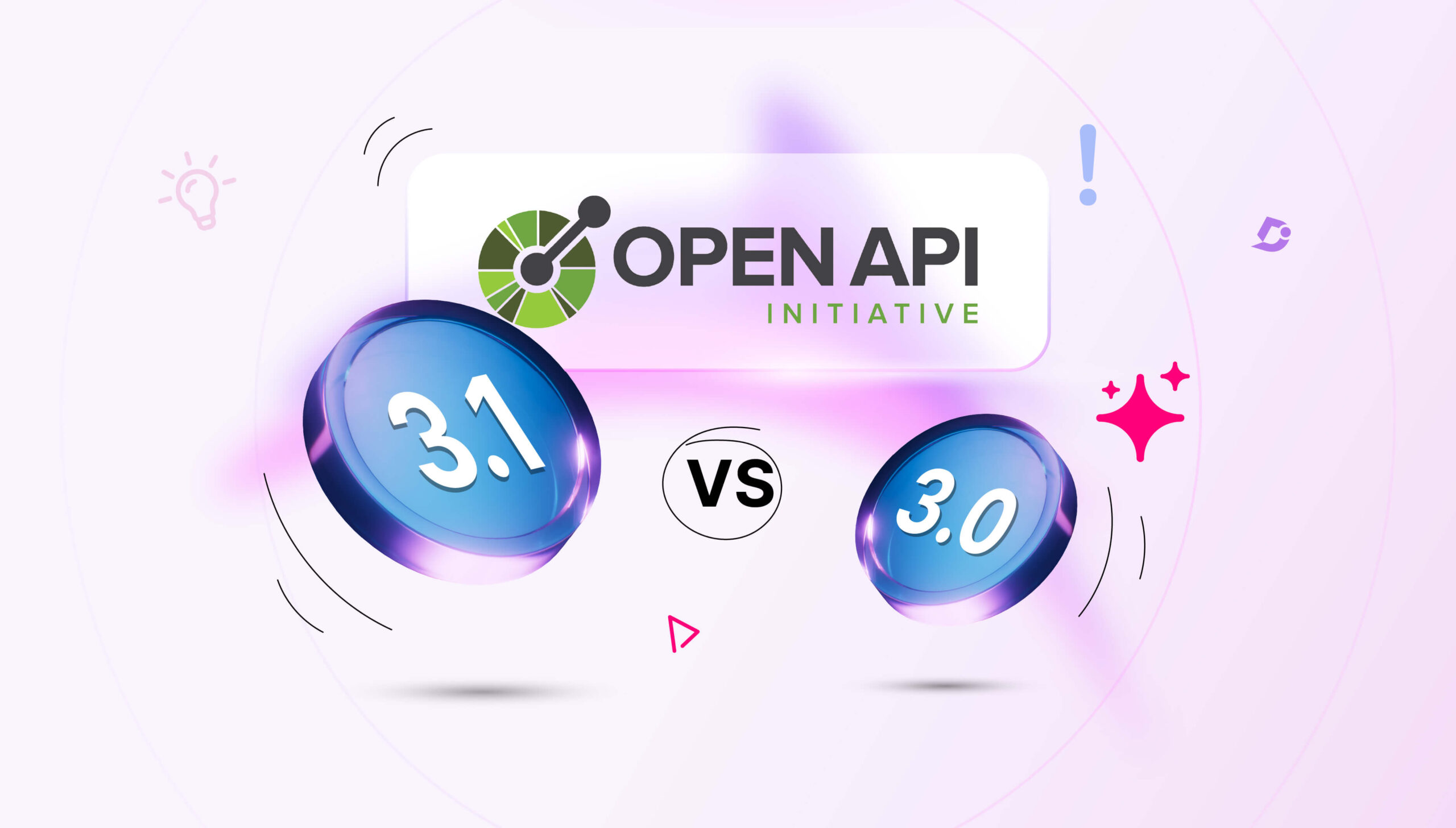API development teams require specialized tools in order to be able to produce their documentation. Without documentation, developers are unable to learn and implement your API, which hampers adoption. This means documentation is critical, along with customized workflows that make documenting your API a more simple task.
APIs can be both public and private, and you need a tool that supports both. You also need integrations with other documentation tooling and often the ability to work with OpenAPI which is a standard API specification. Some tools even generate your documentation automatically for you from OpenAPI, which saves significant time and effort.
Many teams choose Stoplight, which is an API design, development, and documentation platform. Its plethora of features makes it a viable choice for those who want to develop and document their own APIs with a tool that does most of the heavy lifting, creating much better developer experiences for their users.
Stoplight is an API documentation tool that helps you develop quality APIs with a collaborative, API-first design. This means both technical and non-technical team members can work together to create highly reusable APIs that are documented to improve the developer experience.
You can drive your API adoption using Stoplight by offering developers instant mock servers, interactive documentation, tutorials, and code samples in many popular languages. Companies and organizations are using Stoplight to scale their API programs, share APIs, track changes, and manage dependencies.
Stoplight knows that their users work with multiple Git providers, which is why they provide integrations with platforms such as GitHub and GitLab, enabling you to work comfortably with repositories fitting into existing Git workflows. Teams can use Stoplight with the tools they already know to build highly efficient workflows.
Stoplight offers several features that empower development teams to design and document the best APIs for their end users.
OpenAPI-powered interactive documentation
Stoplight uses OpenAPI to power your documentation which is also interactive for developers who want to test your API. Developers can try out API endpoints from within the documentation, and documentation is always kept in sync. Developers who can test your documentation as they learn are much more likely to adopt your API.
Code samples
Stoplight helps you provide code samples for your developers in popular languages, such as Curl, Python, Ruby, and Java, to encourage the adoption of your API with ready-made examples that enable developers to try out your API. Code samples take much of the work out of the process of developers testing out your API.
Markdown editor
With Stoplight, you can use Markdown to create quick start guides, tutorials, and reference documentation for content that is easily updated. Stoplight offers its own version of Markdown that you can use to include JSON Schema examples. Even if developers don’t know it, Markdown is simple to learn and easy to implement.
Hosting (private and public)
You can use the same workspace to host both your private and public APIs with granular roles and permissions, so you can control who has access to your documentation. Change and update access at any time, ensuring that only the right people can view or interact with your API documentation.
Customization
Stoplight offers customization options that you can use to brand your developer hub with versatile theming options, as well as hosting it on your own domain to make it easy to find for developers. Hubs that are in keeping with your own particular brand look more professional and trustworthy.
Search
A hub-wide deep search enables your developers to find the endpoints, reference documentation, and schemas that they need to ensure the API is fully working. Developers don’t need to trawl through masses of documentation when they can simply use the search.
What users say about Stoplight?
Structuring and documenting all the features of your API are very easy with Spotlight. It helps you create scalable and easy-to-export OpenAPI specs which is very useful and structured.
Source: G2
Just like Postman and API Hub, Stoplight is preferred by developer across the globe for managing the entire API lifecycle at a scale.
If you are looking for an alternatives that can specifically improve API documentation, here are 6 alternative solutions for you.
6 Best Stoplight Alternatives to Consider
1. Document360
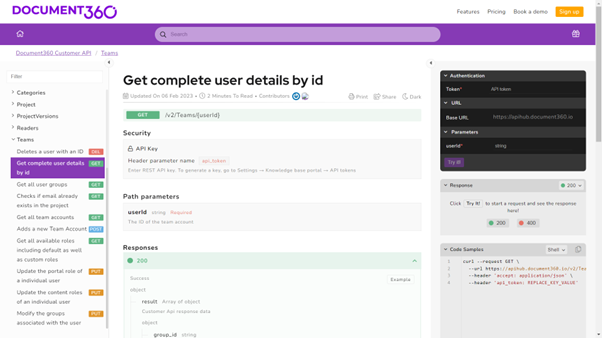
Document360 has been developed for a delightful developer experience, so you can import your OpenAPI specification and automatically generate your documentation. Not just that, you can also manage, organize, and share all your API documentation on it.
It supports both public and private APIs and integrates with other documentation tools to give you a seamless experience.
You can simplify complex APIs with clear and interactive documentation with Document360. Build a centralized developer portal to manage all your API docs, create guides, test endpoints, automate updates, and drive adoption with documentation that developers can use.
With its new AI writing agent Eddy, you can co-author structured and professional API documentation. Another AI feature in API documentation, ‘Try it’, allows you to test APIs that require more than one authentication method, ensuring that your requests are accurately configured and reflect real-world usage.
The AI update also comes with an added feature of API integration that makes it possible for you to manage workflow statuses via API.
User review
Document360 is easy to use and allows my team to quickly create, review, and publish documentation for software instruction, newsletters, and more. I also love how attentive the Document360 team is, meeting with me regularly to demonstrate updates or how to use features that I’m unsure about. Also, my customer success manager is very responsive to all of my queries, responding immediately. I researched many solutions before we decided on Document360 and I still believe it is the best solution for our needs.
Schedule a demo with one of our experts to take a deeper dive into Document360
Book A Demo
2. API Hub (formerly SwaggerHub)
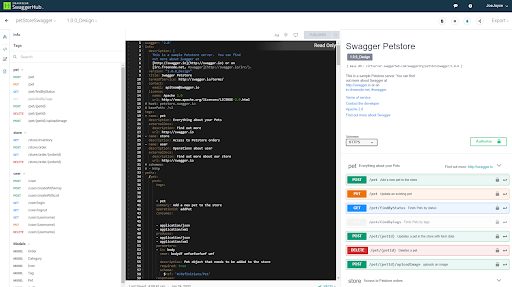
Stoplight can actually be used in conjunction with API Hub to design and document your APIs. It’s a single source of truth in collaboration with OpenAPI and AsyncAPI, enabling you to follow consistent design standards since it has been developed by the team that originally founded OpenAPI as Swagger. API bub has been designed for teams that want lots of features such as collaborative editing and private hosting, as well as forking, comparing, and merging. API Hub also offers integrations with your favorite tools such as GitHub and BitBucket.
User review
API Hub is a great platform for our API design and definition requirements & managing them throughout its lifecycle. It seamlessly integrates well with multiple Swagger tools such as API Editor, Validator & Codegen and brings them together in a single platform where we can effectively collaborate on the functionality of our business workflow. It implements OpenAPI specifications for API management & simplifies the implementation logic for our remote service interactions.
3. Postman

Postman is the world’s leading API platform and has many features that API development teams can use to develop, design and maintain their APIs. It’s the industry standard used by more than 25 million developers and fully supports you throughout the entire API lifecycle. Postman can store and manage API specifications, documentation, workflow recipes, test cases and results, metrics, and everything else related to APIs, making this a full-fledged solution for developing APIs.
Also, check out our article on Postman Alternatives
User review
One of Postman’s distinguishing qualities is its user-friendly design, which makes it incredibly simple to use and navigate. The application’s clean, user-friendly style welcomes you immediately and makes it simple to develop, maintain, and test APIs. Postman’s UI’s ease of use and effectiveness substantially increase productivity and speed up the API development process, whether you’re a novice or a seasoned developer.
4. ReadMe
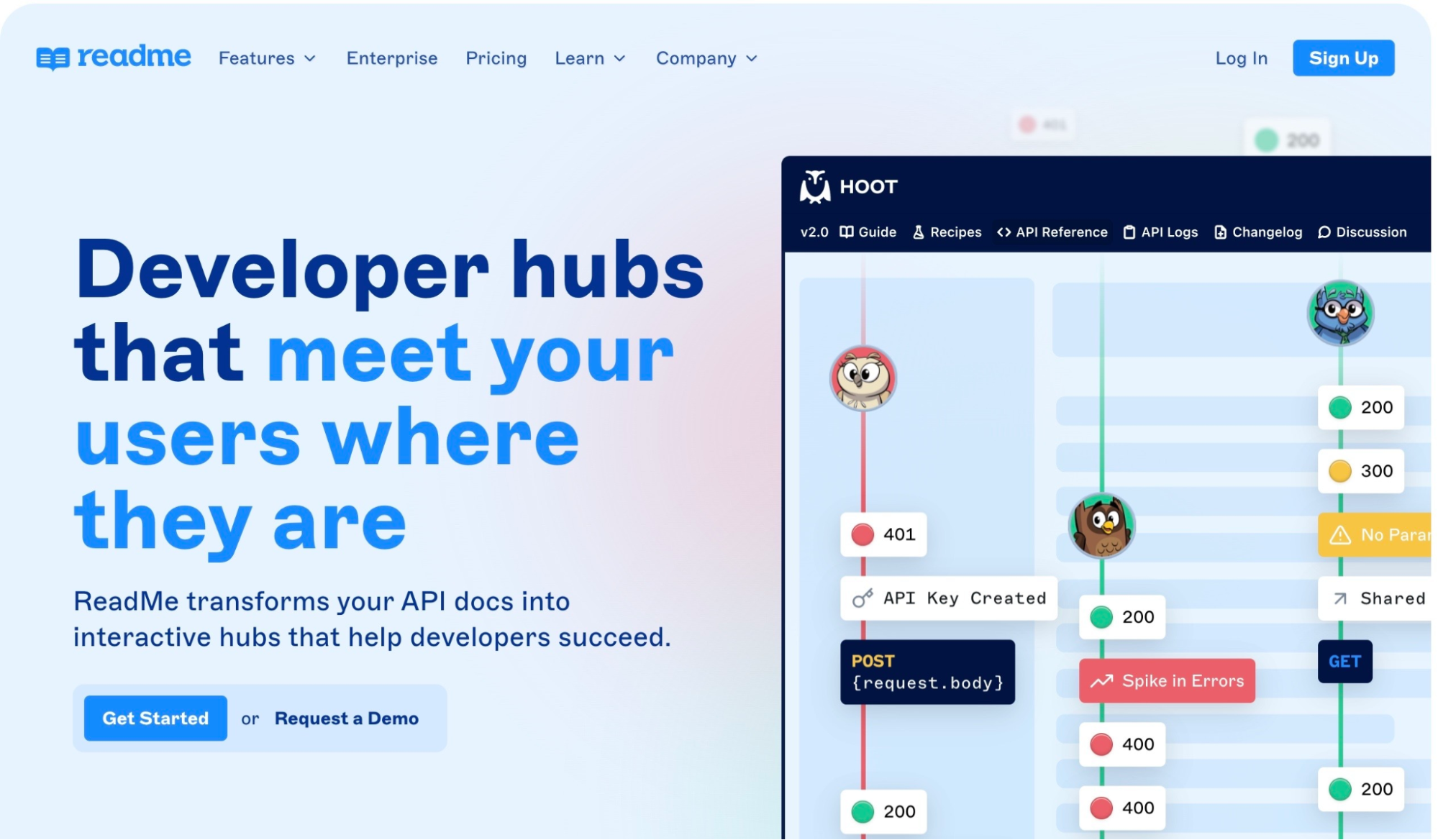
ReadMe is directly aimed at helping you create interactive developer documentation for your API. They call their API documentation “hubs” that improve the developer experience tailored to the individual. Through the documentation, developers can make calls with your APIs and test out what’s possible in their preferred language. Extensive analytics enable you to understand usage patterns for your API and make data-driven decisions regarding development.
User review
The ease of use is awesome; it is straightforward and very powerful while being simple to use. I especially like that you can have a molecular design for your Docs; that is, you can make many divisions and levels of information. I also think that something great about Readme is the ease of adding in things different than text (images, tables and Code examples). For example, it’s great that you can have multiple versions of the code examples and also the expected result/response.
5. Slate
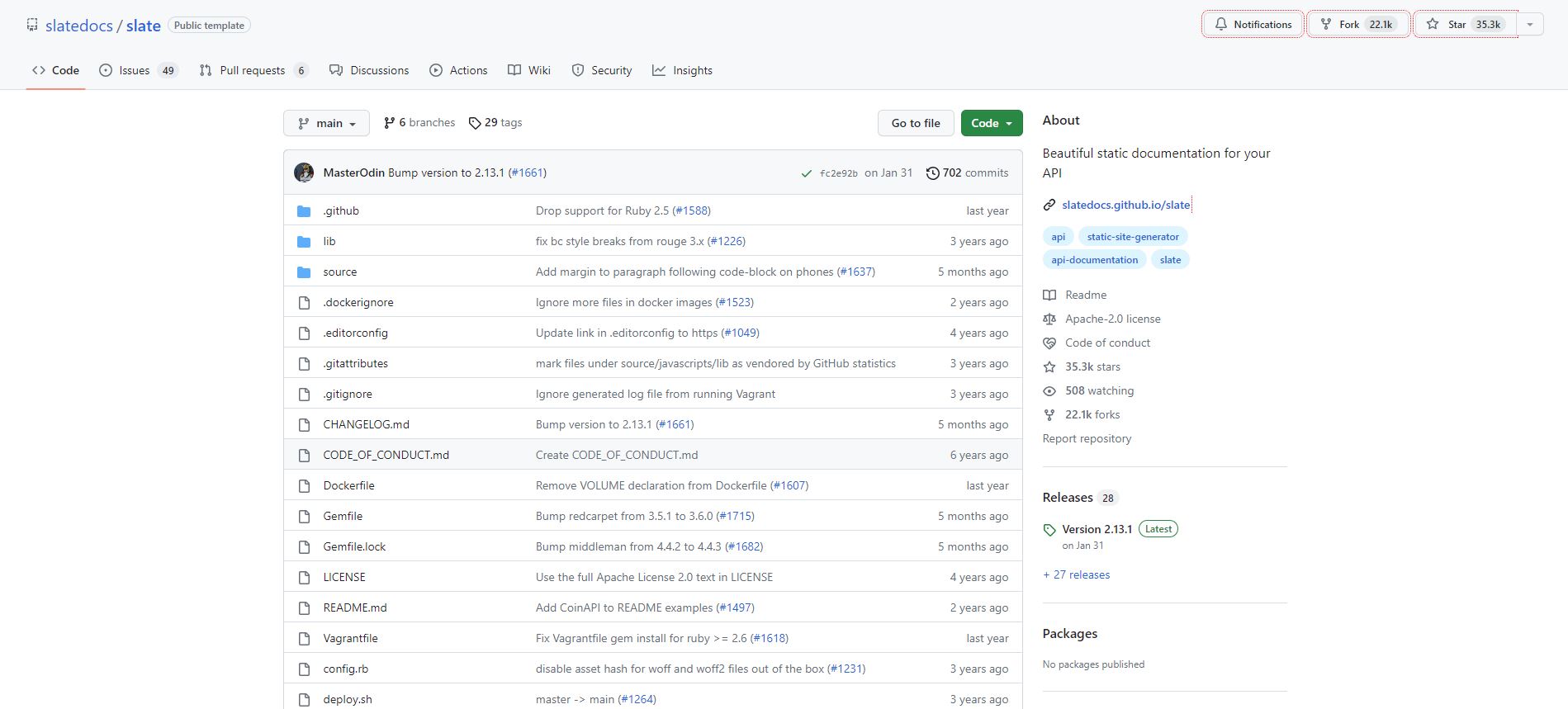
Slate is a static site generator for API documentation. Easy and simple to use, it creates clean and simple documentation inspired by the Stripe API docs, which have become an industry standard. Slate uses Markdown to write and publish API documentation so developers can use a language they are familiar with. You can create intelligent and responsive API documentation integrated with GitHub through hosting with GitHub pages.
User review
For API-specific docs I use Slate as I like the code sample section off to the right. I converted our previous severely lacking Swagger setup to a full-featured framework with Slate that has significantly reduced the number of support emails regarding API questions.
6. Redocly
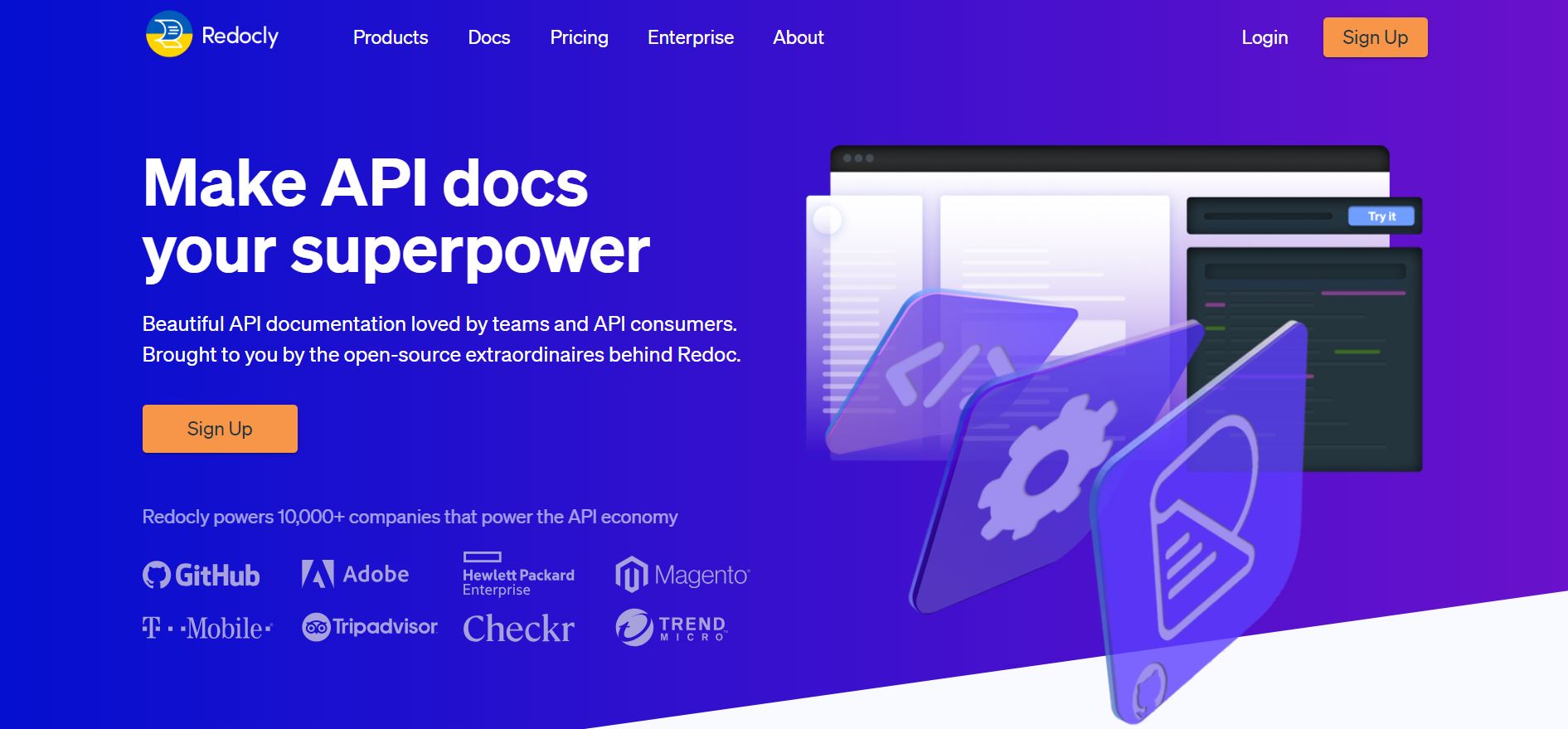
Redocly is a simple docs-as-code tool which allows you to document your API with the same tools that developers use to write their code. You are empowered to create beautiful API reference docs with three panels, try-it console, and generated code samples. Redocly integrates with all the most popular source control platforms so you can ensure that your documentation is always up-to-date with the latest version. You can use the themes and layouts that fit your brand and host your documentation on your own custom domain.
User review
Redocly provides you with a suite of services and features properly designed for the whole API lifecycle and allows you to transform a simple OpenAPI specification into a branded portal with interactive and up-to-date API documentation.
Also Read: Top 6 Mintlify Alternatives
Wrapping Up
While Stoplight is a popular tool for API documentation, but some users will certainly want to consider alternatives. With straightforward pricing and simple workflows, Document360 takes the headache out of writing and publishing API docs. With documentation automatically generated from your specification file, you can reduce the time it takes to produce fully functioning API documentation.
No API is complete without documentation to accompany it. APIs require specific features and workflows for you to provide the best possible developer experience, and encourage API adoption among your user base. Document360 can take you from a state of sub-par API documentation to content that delights and wows your users.



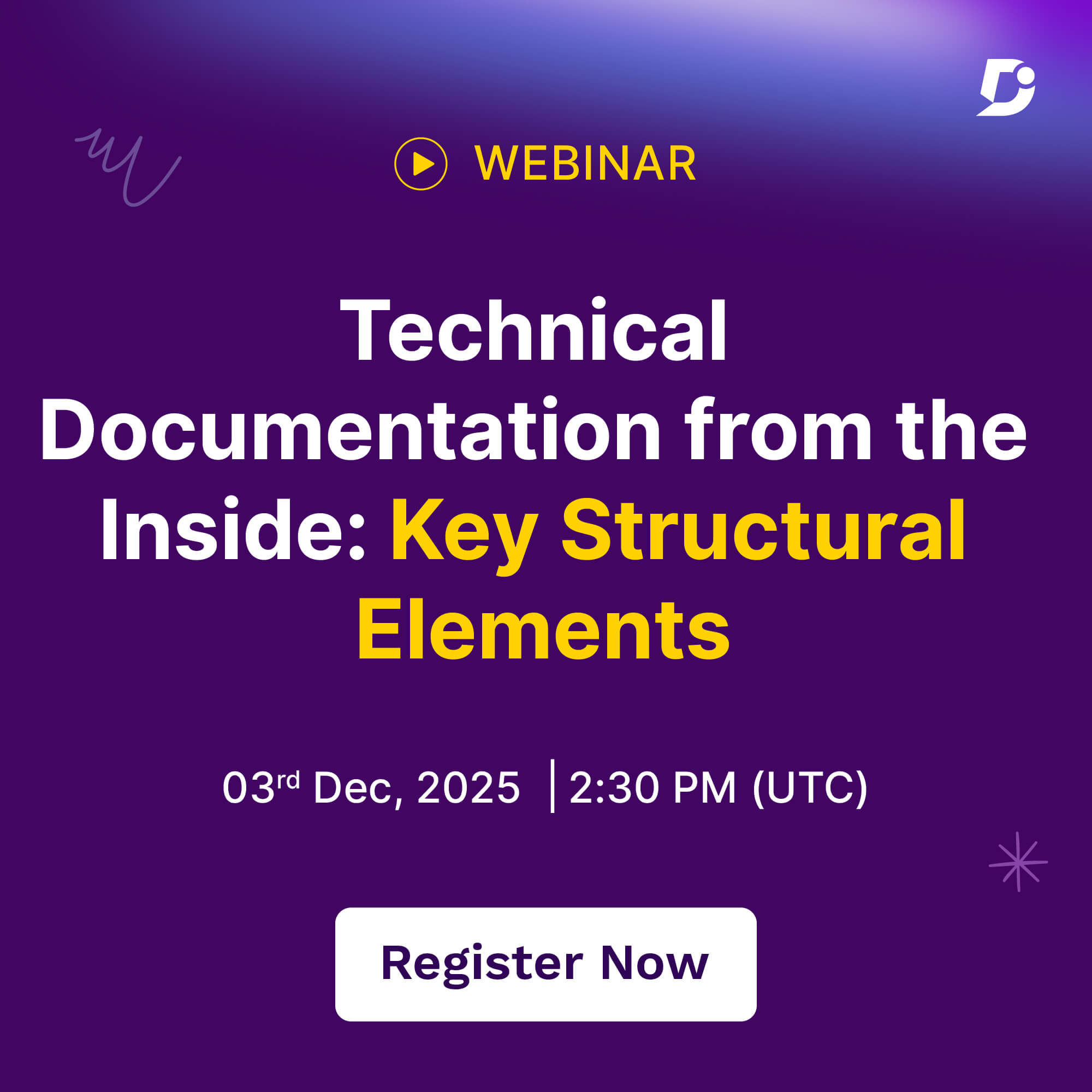
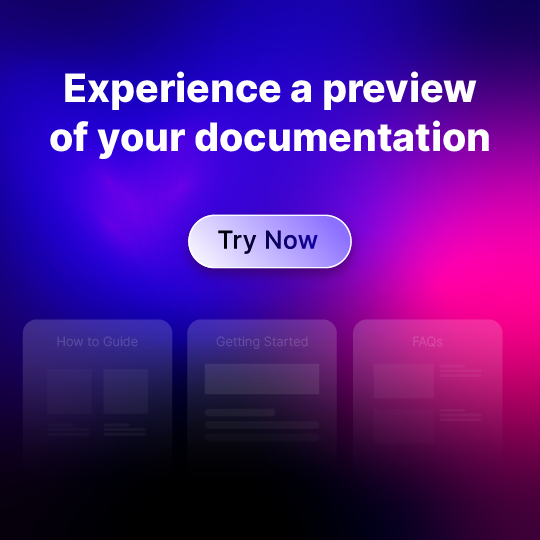
 –
– 